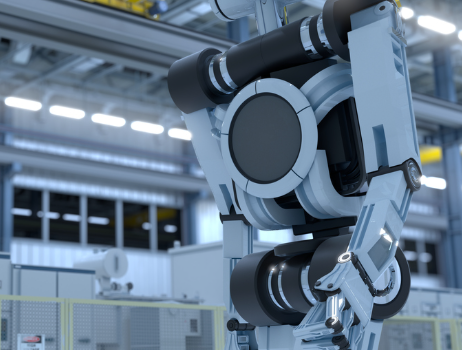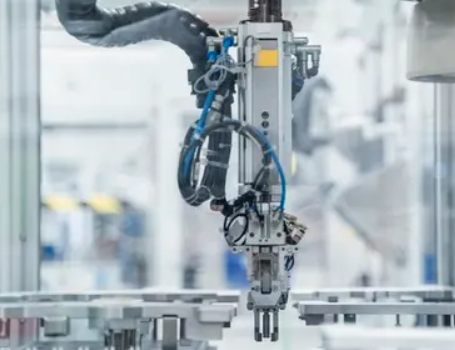
Machine vision is rapidly changing the landscape of industrial automation, enabling machines to “see” and make decisions with remarkable precision. This technology plays a pivotal role in enhancing operations by automating tasks like visual inspection, defect detection, product sorting, and tracking. As industries demand more efficiency, machine vision is becoming a cornerstone of robotics, driving greater productivity and innovation.
The Role of Robots in Industry
Industrial robots are transforming manufacturing by performing repetitive tasks with high accuracy and consistency. Machine vision enables these robots to “see” and interact with their environment, enhancing their functionality. Equipped with cameras and digital sensors, these systems capture images that are processed to help robots understand and respond to their surroundings. The integration of artificial intelligence (AI) and machine learning has further boosted these robots’ capabilities, improving their ability to analyze data and make real-time decisions.
The Importance of High-Quality Optics
For machine vision systems to operate effectively, the optical components must be reliable and precise. The lenses used in these systems are crucial for focusing images accurately onto sensors, and their quality directly impacts the performance of the entire system. Factors such as lens type, focal length, and aperture must be considered carefully to achieve the desired results for each specific application.
AI and Machine Learning: Enhancing Robot Intelligence
AI and machine learning have significantly expanded the capabilities of industrial robots. These technologies enable robots to learn from their environments and make decisions based on real-time data, which makes them more versatile in handling complex tasks. As manufacturing becomes more sophisticated with technologies like 3D printing and nanotechnology, robots are increasingly called upon to perform highly specialized tasks with precision.
Workplace Safety Improvements
Robotic automation is making workplaces safer by taking on hazardous tasks that would otherwise put human workers at risk. Robots can operate in extreme conditions such as high temperatures, confined spaces, and environments that involve dangerous materials. This not only reduces the risk of accidents but also ensures that work is performed consistently without fatigue, leading to better overall outcomes.
Adaptability of Robotics
One of the key advantages of robotic systems is their adaptability. Manufacturing environments are constantly changing, and robots can easily be reprogrammed or reconfigured to perform different tasks. This flexibility allows manufacturers to quickly respond to market demands and shift production processes as needed, keeping them competitive and agile.
Job Creation and Skill Development
While robots are increasingly handling repetitive tasks, they also create new opportunities for human workers. The development, programming, and maintenance of robotic systems require skilled technicians and engineers. As robots take over routine jobs, human workers can focus on more complex roles that involve problem-solving, creativity, and critical thinking.
Sustainability and Efficiency
Robotic systems also contribute to sustainability by optimizing resource use and reducing waste. In manufacturing, robots can be programmed to operate during off-peak hours, reducing energy consumption. They can also help manage resources like raw materials and water more efficiently, making operations more sustainable.
Staying Competitive in a Global Market
To stay competitive globally, manufacturers must embrace robotics in their production processes. As automation becomes more widespread, companies that fail to integrate robotic systems risk falling behind. Robotics enables companies to improve efficiency, quality, and cost-effectiveness, all of which are crucial for maintaining a competitive edge in the marketplace.
Optimizing the Supply Chain with Robotics
Robotic automation is also transforming supply chain management. By leveraging technologies such as IoT and machine learning, robots can track and analyze data in real-time, improving inventory management, forecasting accuracy, and overall customer satisfaction. This level of optimization is essential for meeting the demands of today’s fast-paced market.
The Critical Role of Lenses in Machine Vision
As machine vision technology continues to evolve, advanced lenses such as the ViSWIR series are becoming increasingly important. These lenses are designed for the latest SWIR imaging sensors, providing clear, accurate, and consistent performance across a wide range of applications. The ViSWIR lenses are ideal for machine vision, UAVs, and remote sensing, offering a unique capability to capture data across various spectrums and at different distances.
Additionally, plug-and-play lenses are commonly used in robotics. These lenses provide the necessary visual input for robots to understand their environment, whether it’s for object recognition, navigation, or autonomous functioning. The LensConnect Series of lenses, known for their exceptional image quality and ease of use, make it easier for businesses to implement robotic solutions.
The Road Ahead for Robotics
The potential of robotics is limitless. From transforming manufacturing processes to enhancing applications in healthcare and beyond, robotic systems are continuously advancing. With ongoing developments in AI and lens technology, the future of robotics promises even greater innovation, changing how we work and interact with machines in ways that were once unimaginable.



















Comments